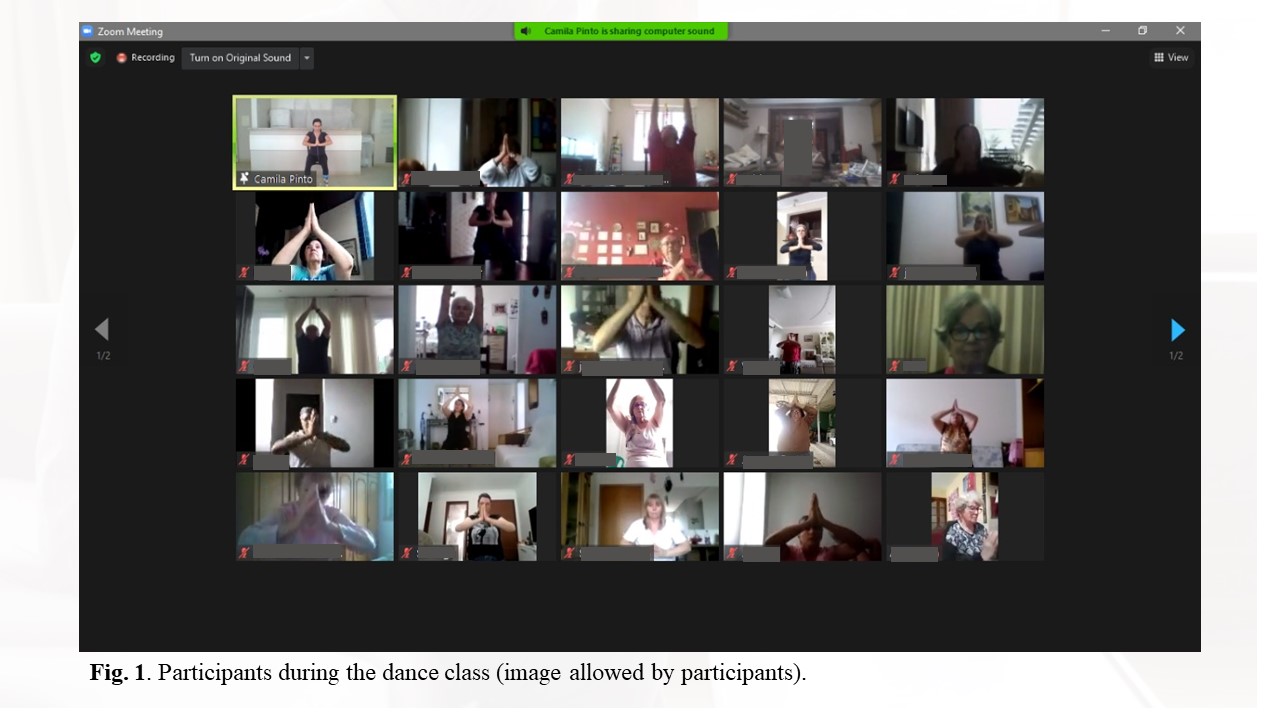Category: Parkinson’s Disease: Clinical Trials
Objective: To investigate the safety and effectiveness of online dance classes (in live) in a group of people with and without Parkinson’s Disease.
Background: Dance therapy is one of the several interventions that have shown important benefits on motor and non-motor symptoms in people with Parkinson´s Disease (PD). Nowadays, there is a growing necessity for on-line interventions for those people that are not able to go outside their houses without assistance or take public transportation and those who live in remote places with internet availability.
Method: This is a feasibility study approved by the Ethics Committee of Universidade Federal de Ciências da Saúde de Porto Alegre (UFCSPA) (Brazil) (Identifier: 4.165.923) and registered on ClinicalTrials.gov (Identifier: NCT04580849). In this study, two groups of individuals with (n=13; age=70; Mini-Mental State Examination (MMSE)=27.83; New Freezing of Gait Questionnaire (NFOG-Q)=11.92; Hoehn and Yahr scale (HY)=2.63) and without PD (n=15; age=70; MMSE=28.79) were included.
Individuals were invited to perform an initial assessment by a synchronic videoconference using the zoom platform. All participants undertook together sixteen on-line dance classes using zoom platform (synchronic), twice a week, 60 minutes each class, for two months.
To assess the feasibility of the study design, participants were followed by researchers during the whole intervention regarding adherence, frequency, and safety (i.e. falls) (scale=0-100%). Both groups were assessed before and after the intervention for (I) anxiety and depression symptoms (Hospital Anxiety and Depression Scale (HADS)), (II) self-efficacy in performing activities without losing balance (Activities-Specific Balance (ABC) Scale), and (III) functional mobility strength of lower extremity (Five Times Sit to Stand Test (FTSTS)).
Results: Results showed that online dance classes were 100% safe for both groups. Participants from the PD group presented an adherence of 100% and a frequency of 90% during the dance classes. Moreover, the PD group decreased the time to perform FTSTS after the dance classes (p=0.004) but did not show changes in HADS and ABC outcomes. Participants from the control group did not change outcomes over time.
Conclusion: We conclude that online dance classes are safe for PD population. This activity may be an important option for people living in remote places with internet availability.
To cite this abstract in AMA style:
C. Pinto, C. Figueiredo, V. Mabilia, I. Cortez, F. Pereira, T. Rosa, I. Bevilacqua, E. Jeffrey, A. Pagnussat. Feasibility of dance therapy through synchrony videoconference in Parkinson’s disease and elderly people. [abstract]. Mov Disord. 2021; 36 (suppl 1). https://www.mdsabstracts.org/abstract/feasibility-of-dance-therapy-through-synchrony-videoconference-in-parkinsons-disease-and-elderly-people/. Accessed December 31, 2025.« Back to MDS Virtual Congress 2021
MDS Abstracts - https://www.mdsabstracts.org/abstract/feasibility-of-dance-therapy-through-synchrony-videoconference-in-parkinsons-disease-and-elderly-people/

